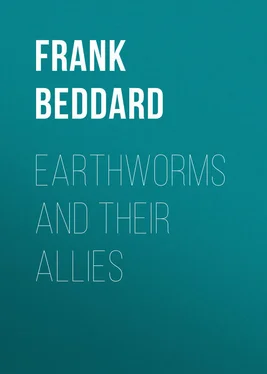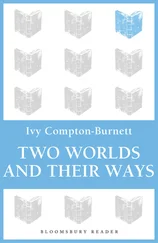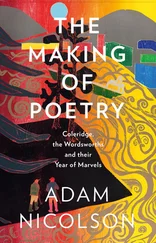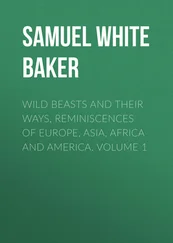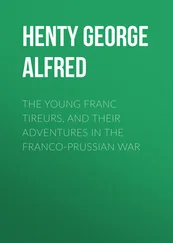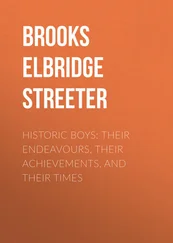Frank Beddard - Earthworms and Their Allies
Здесь есть возможность читать онлайн «Frank Beddard - Earthworms and Their Allies» — ознакомительный отрывок электронной книги совершенно бесплатно, а после прочтения отрывка купить полную версию. В некоторых случаях можно слушать аудио, скачать через торрент в формате fb2 и присутствует краткое содержание. Жанр: foreign_antique, foreign_prose, на английском языке. Описание произведения, (предисловие) а так же отзывы посетителей доступны на портале библиотеки ЛибКат.
- Название:Earthworms and Their Allies
- Автор:
- Жанр:
- Год:неизвестен
- ISBN:нет данных
- Рейтинг книги:3 / 5. Голосов: 1
-
Избранное:Добавить в избранное
- Отзывы:
-
Ваша оценка:
- 60
- 1
- 2
- 3
- 4
- 5
Earthworms and Their Allies: краткое содержание, описание и аннотация
Предлагаем к чтению аннотацию, описание, краткое содержание или предисловие (зависит от того, что написал сам автор книги «Earthworms and Their Allies»). Если вы не нашли необходимую информацию о книге — напишите в комментариях, мы постараемся отыскать её.
Earthworms and Their Allies — читать онлайн ознакомительный отрывок
Ниже представлен текст книги, разбитый по страницам. Система сохранения места последней прочитанной страницы, позволяет с удобством читать онлайн бесплатно книгу «Earthworms and Their Allies», без необходимости каждый раз заново искать на чём Вы остановились. Поставьте закладку, и сможете в любой момент перейти на страницу, на которой закончили чтение.
Интервал:
Закладка:
So much then for the external characters of our worm. We next turn to the internal anatomy. When the worm is opened by a longitudinal section from end to end, and the two flaps of skin are turned outwards and pinned down, the internal structure is almost completely revealed. Running from end to end is seen the alimentary canal; the general cavity of the body (coelom) in which it lies, as do of course the other organs to be enumerated, is seen to be divided by cross divisions, the intersegmental septa, into a series of chambers which correspond with the external division into segments. The septa are in fact inserted on to the body-wall along the furrows which mark the divisions between adjacent segments. Anteriorly the large pharynx is responsible for confusing the arrangement of the septa, which become subdivided and fused or are prolonged a greater way backwards and thus present a less obviously segmental disposition. Certain of the more anteriorly placed of these septa are much thicker than the rest. This is the case with the septa which separate segments V to XII. The alimentary canal is perfectly straight and runs in the middle line, being supported by the septa which it perforates. The mouth leads into a buccal cavity which later becomes the pharynx, a portion of the tube which is much thickened by muscular walls dorsally. Then follows a very short section of the oesophagus and in the fifth segment this becomes the gizzard, a very characteristic organ with thick muscular walls quite smooth and with a very thick lining of structureless membrane. After this is a narrower tube, the rest of the oesophagus. Into this open in each of segments VII, VIII, IX a pair of calciferous glands; these are diverticula of the gut with much folded walls, the cells of which secrete carbonate of lime. In the XIIth segment or so, the oesophagus suddenly widens out to form the intestine which runs as such to the end of the body. This wider tube has a ridge running along its dorsal side, the typhlosole. Along the dorsal surface of the intestine and the oesophagus is seen a red tube, contractile during the life of the worm, which is the dorsal blood vessel and whose contained blood is coloured red, as is the blood of vertebrated animals, by haemoglobin. But in the earthworm the colouring matter is not situated in corpuscles as in the vertebrate. The dorsal vessel is connected by a few pairs of equally contractile transverse trunks with a ventral vessel which is not contractile. There are other branches of these main longitudinal trunks and some minor longitudinal trunks which we shall not stop to describe further. The nervous system of the worm consists of a pair of ganglia which lie above the gut in the third segment; they are connected by a commissure running round the gut with a chain of closely fused pairs of ganglia, one for each segment to the very end of the body. In each of the segments, except the first two or three, there are a pair of excretory organs known as nephridia; these are essentially coiled glandular tubes opening on to the exterior by the regularly placed pores already referred to in considering the external characters. The tube ends in a funnel-shaped, and therefore dilated, mouth, which opens into the segment in front of that which contains the rest of the organ; a nephridium therefore lies in two segments. The only other important organs which are left for consideration are those devoted to the reproduction of the species. The essential organs are the spermaries and the ovaries. Of the former there are two pairs of minute whitish bodies which lie in segments X and XI on either side of the nerve cord attached to the anterior septal wall of their segments. The ovaries are not in the following, but in the XIIIth, segment, and occupy an identical position in that segment. A short tube with a funnel or trumpet-shaped and wide orifice opens into the cavity of the XIIIth segment opposite to each, and, perforating the septum, opens on to the exterior on the XIVth segment. A similar but larger and more folded pair of trumpet-shaped funnels opens in the same way opposite to each spermary. But in this case the two tubes of the sperm ducts run backwards for some way and those of each side after joining open on to the XVIIIth segment by the pores already mentioned. On the XVIIth and XIXth segments open two glands which are long and tubular in form and much coiled. These are the spermiducal glands and each opens in common with a muscular sac containing the long and ornamented seta referred to in describing the various external orifices. It will be noticed that the sperm duct has no direct connection with these glands but only indirectly through the external gutter which connects the three male orifices of each side of the body. Segments IX-XII inclusive contain certain sacs which depend from, and are formed as outgrowths of, the septa of those segments. These are the sperm sacs in which the male germ cells undergo their development. A corresponding body (but very much smaller) is sometimes found in relation to the ovary but has not been actually described in the particular species dealt with here. Finally, in segments VIII and IX are a pair (that is four altogether) of roundish sacs, with two or three minute diverticula, known as the spermathecae. In the diverticula of these sacs are stored the sperm derived from another individual.
This completes the general sketch of the structure of Notiodrilus tamajusi which we have selected as a type. In this same genus are a large number of species which differ from that selected in various small structural points. Thus in N. annectens (Beddard), a species from New Zealand, the spermaries and ovaries are attached to the posterior, instead of to the anterior, wall of their segments, and there are neither calciferous glands nor modified setae upon segments XVII and XIX. In all essentials however the two types agree and are thus to be looked upon as referable to the same genus. Starting from the structure of these types we may now sketch in quite a brief way the main divergencies of structure shown in the group of Oligochaeta.
We shall naturally begin with the family Megascolecidae of which a type has just been described.
Within the limits of the same sub-family as that which contains Notiodrilus , i. e. the Acanthodrilinae, the changes of structure affect all the principal organs of the body except the nervous system, but are not very large and vary from genus to genus. They are mainly perhaps in the direction of reduction and simplification. Thus in Chilota , Maheina and Yagansia the spermaries are reduced to one pair in either the Xth or XIth segment, while in Yagansia one pair of spermathecae and of spermiducal glands have also disappeared. In Microscolex the spermaries remain normal, but one pair of spermathecae and of spermiducal glands have disappeared, the remaining organs of these series being in the IXth and XVIIth segments respectively. In Microscolex , Chilota and Yagansia , moreover, there is a further degeneration in the disappearance of the calciferous glands. These glands are often absent and sometimes less developed in the New Zealand Maoridrilus , which is otherwise not a degenerate form and differs characteristically from Notiodrilus by the fact that the paired nephridia alternate in position in successive segments, being now in front of the dorsal, and in other segments in front of the ventral, pairs of setae. While these genera are somewhat degenerate, the New Zealand Plagiochaeta has undergone specialisation in an upward direction. For the setae of each segment are increased to a large number much exceeding eight.
It is not a long step to the sub-families Diplocardiinae and Trigastrinae. In the first of these, an American race confined to the northern and central parts of that continent, the male pore shows a tendency to move backwards, being situated on any of segments XVIII-XXI. The two spermiducal glands follow it, but are always placed one pair in front and one behind, as in Notiodrilus . In this group we get a new feature of specialisation in the duplication or triplication of the gizzard.
Читать дальшеИнтервал:
Закладка:
Похожие книги на «Earthworms and Their Allies»
Представляем Вашему вниманию похожие книги на «Earthworms and Their Allies» списком для выбора. Мы отобрали схожую по названию и смыслу литературу в надежде предоставить читателям больше вариантов отыскать новые, интересные, ещё непрочитанные произведения.
Обсуждение, отзывы о книге «Earthworms and Their Allies» и просто собственные мнения читателей. Оставьте ваши комментарии, напишите, что Вы думаете о произведении, его смысле или главных героях. Укажите что конкретно понравилось, а что нет, и почему Вы так считаете.
